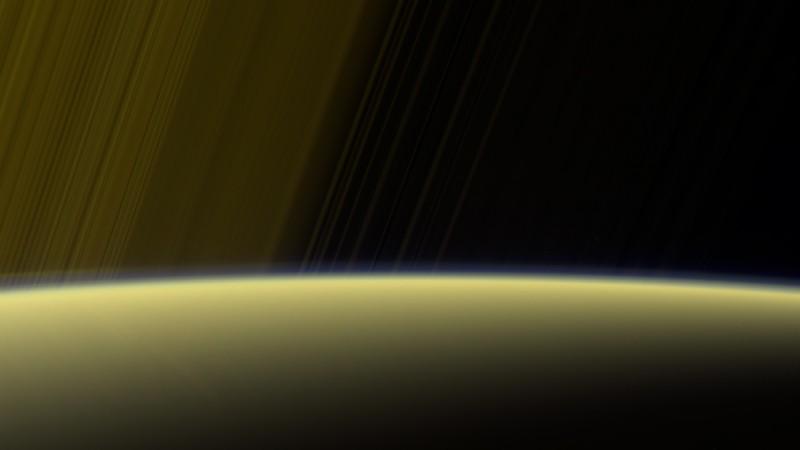
NASA's Cassini spacecraft has assessed little fragments of Saturn's rings. It captured details of the bands and swirls in the ringed planet Saturn's atmosphere during its ongoing mission -- the Grand Finale dive.
ALSO READ: NASA's New Horizons team examines mysterious KBO 2014 MU69: Top 7 facts to know

Here are the top things to know about the latest finding:
- It was observed that there is no visible tilt in the magnetic field of the planet, which led to the conclusion that the exact length of Saturn's day remains unknown.
- Samples of Saturn's atmosphere have been collected by Cassini. And the spacecraft will now be crashed into Saturn's atmosphere by September 2017.

Cassini Noodle Mosaic of Saturn 00:03 01:31 Photojournal: PIA21617 July 24, 2017 This mosaic of images combines views captured by NASA's Cassini spacecraft as it made the first dive of the mission's Grand Finale on April 26, 2017.NASA/JPL-Caltech/Space Science Institute/Hampton University - "During Cassini's first two passes through the inner D ring, the particle environment there was found to be benign. This prompted mission controllers to relax the shielding requirement for one orbit, in hopes of capturing ring particles," NASA stated.
- Cassini spacecraft's cosmic dust analyser (CDA) accumulated many nanometer-size ring particles while it was flying through the gap between the ring and the planet, which is likely to provide some crucial data to the researchers.
- The spacecraft's ion and neutral mass spectrometer (INMS) has explored the outermost atmosphere of Saturn, which is known as the exosphere. The spacecraft is expected to transmit important data acquired from the samples deeper down in the atmosphere regarding the composition of the Saturnian atmosphere.
Watch the video of Cassini's First Fantastic Dive Past Saturn:
YouTube/ NASA Jet Propulsion Laboratory


















